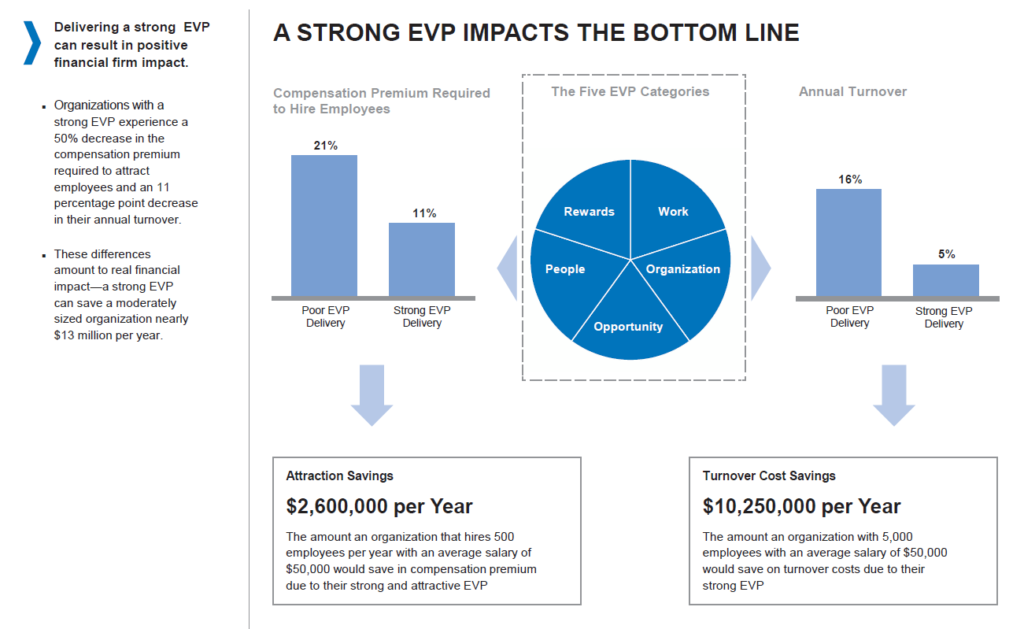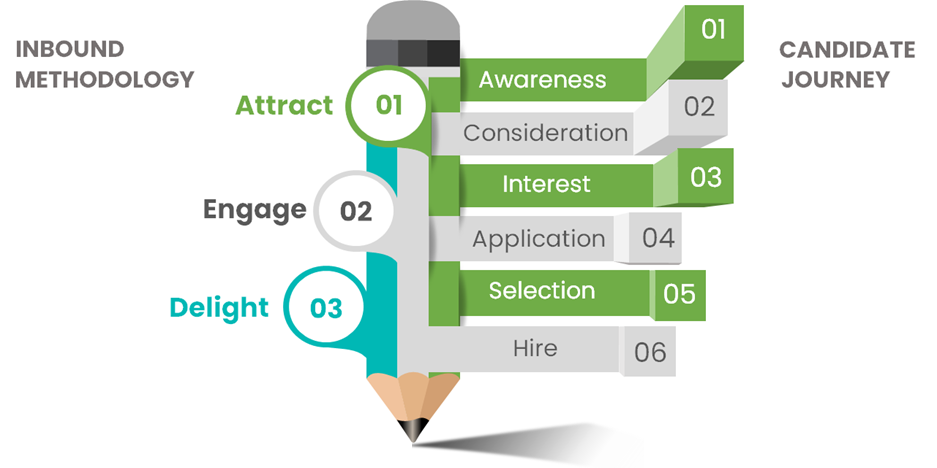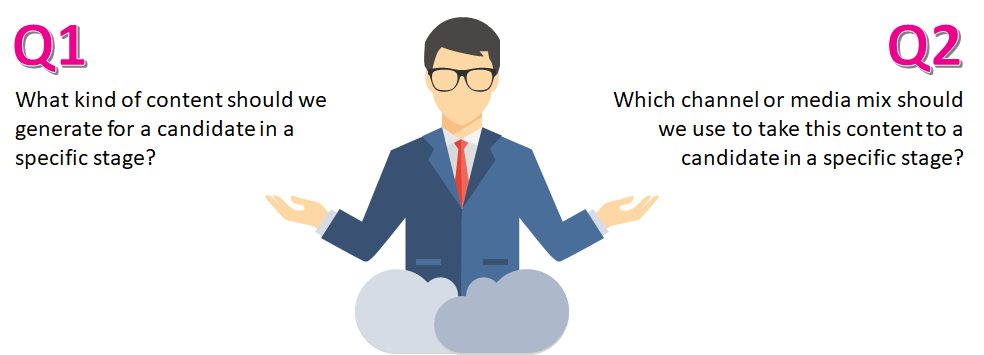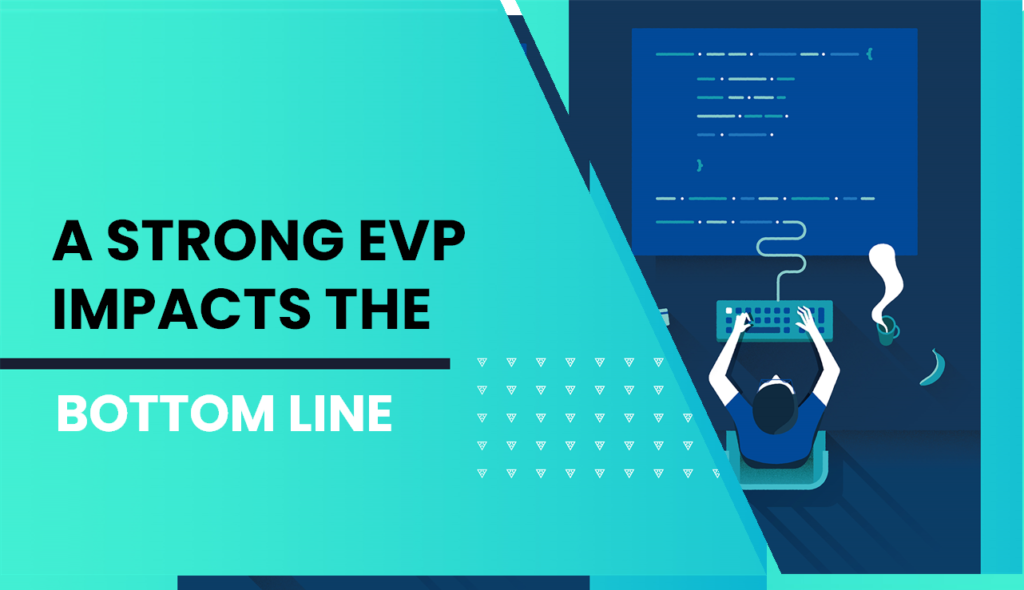This informaticle is divided into three parts:
Part#1: Why building EVP is important for a business, not just from the perspective of being at the top of the demand and supply game but also and more importantly from not going out of business.
Part#2: Understanding a very important concept before jumping onto building your EVP, i.e., “knowing, not all folks drink your cup of tea’’.
Part#3: How to go about building your EVP
Let’s shoot!
Part#1: Importance of building your EVP
What’s your business goal for the coming year? Ask any C-Exec and the most common answer you would get is — increase revenue and capture a bigger pie of the market share. Ask the follow-on question, how do they plan to achieve these goals? The most common answer would be along the lines of — by running lean and agile, by applying design thinking in running operations, etc.
Though most of the execs understand and would agree that building the right teams is THE MOST CRITICAL PART to achieve any of their operational and organizational goals, let’s be honest, very few of them would focus on one of the fundamental tenets of workforce staffing strategies which is preparing the Employee Value Proposition (EVP) of the organization. Some bigger organizations did have EVP but with business going through changes over the years like mergers and acquisitions, top management shuffle, investors coming in, the core of EVP will mostly either be lost or will be put on the back burner and is never given its due share of importance.
Here are some FACTS and STATS that should bring in perspective on WHY is it important at all to have an employer brand, in other words, an Employee Value Proposition:
STATS#1 — Employer Brands’ impact on Business Productivity and Market Risk

Source: Advantage — Mckinsey — Superior talent is up to eight times more productive | Threat — Gartner — Top 10 Emerging Risks
STATS#2 — How can a strong EVP impact the bottom line?

Source: Corporate Executive Board
Summarising the above:
A strong Employer Brand can:
– positively impact the quality and timely delivery of your product/service
– improve productivity up to 8 times
– positively impact the bottom line
A weaker Employer Brand would surely put your business at risk
Part#2: Not every top talent in your business vertical is someone you necessarily want.
Now that the aforementioned stats and facts have got you pondering; before you jump onto the HOW of building an employer brand through your EVP to engage the cream of talent in your business vertical, there is a very important aspect you should understand, i.e, “not every top talent in your niche is the person you are actually looking for.”
We need to start from the basics of human nature here. You see, every individual is driven by a set of needs and motivations that is different from the others. Some employees place a greater sense of importance on culture vis a vis financial gain. On the other hand, some candidates cite their financial stability or career progression as their biggest motivation for choosing a company. As if that’s not enough, there are just as many people who would consider each of these factors as being equally important and seek to strike a balance between them. Some people enjoy working in a fast-paced environment or taking responsibility for a variety of roles, but many prefer structured and defined roles with specific objectives.
It is also important to understand, how every other candidate is different, every organization is also different from one another. Even in the same vertical offering exact same set of solutions/services, every firm has its own recipe of servicing clients, has its own unique work culture, which won’t fit every candidate — and that’s absolutely okie!
Hence, the EVP of any organization has to be a unique strategy which defines the WHY of an organization — the underlying purpose or intrinsic nature of a company, which sincerely tells everyone the purpose or belief, why this business exists, and what it’s like to work in your organization. Aside from the obvious perks, what an EVP actually and genuinely entails are the reasons for which people might want to work at the company. The Result — it integrates every aspect of the organization and is used to retain and attract the most outstanding talent available that fits your business.
Part#3: Prepare your Employee Value Proposition
The most common definition of an EVP out there is — a specific set of benefits that can be used to attract the right skills, talent and experience to a company. I would call this definition ‘half-baked’ as it doesn’t include the Part#2 above. The reason being, if you only focus on the skills, talent and experience required to do a job, the main objective of building successful teams would fall apart in no time.
Here is how I would define an EVP –
An Employee Value Proposition (EVP) is a specific set of benefits which are based on the unique belief system and values of a company, that can be used to attract not only the right skills, talent and experience but also the right fit for the company.
Equipped with this new definition, what steps can you take to establish a strong EVP for your organization? Here is a step by step approach:
STEP#1: Understanding the Target Audience
Reiterating the Part#2, first and foremost define the WHY of your business — why you do what you do? Taking a cue from Simon Sinek’s TED Talk — The Golden Circle, people (employees, clients and consumers in a business context) connect with your belief (purpose/cause) more than what you do (your products/services) and how you do it (your differentiating factors or USPs). Simon says, and I quote, “it’s all grounded in the tenets of biology, not psychology”. He explained how the human brain works and we make decisions. The WHY factor, as he explained, is where the ‘gut’ decisions/feelings come from. The goal is not to have anyone and everyone in your team because you have a great product or service that is new or unique and has a great scope but to have the folks who believe in what you believe and rest everything will follow. Don’t you worry about the number of folks here. Once you have figured, sincerely designed, and implemented your WHY as the core of your business, you’ll be surprised to see how many folks you can inspire to join you.
Once you’ve defined the belief system and core values of your business, it’s important to understand the employee diversity and tailoring the EVP for different workforce segments. Depending upon the fundamental values and the nature of the business, you need to define the kind of employees you need in specific roles and as an organization at large. This could determine the right type of talent mix for your company at the same token. You can achieve this by going through the exercise of mapping six stages of the candidate journey with the inbound methodology of audience engagement.

Though candidate journey mapping and inbound marketing can be explained in much detail (that I would soon present under different topic), here is how the established players can go about it:
· Conduct internal surveys among your best and tenured employees to figure out the candidate journey mapping per job type/ roles and responsibilities/ geographies that your organization operates in.
· Equipped with data from the survey, figure out the ideal candidate persona — what are their motivations, aspirations and fears, where do they go online and offline to look for information and engage. This will answer two critical questions for you:

STEP#2: Developing the Proposition
As a thumb rule, the objective should be to entice candidates with both tangible and intangible factors. Here are four main categories that can be used to influence prospective fit for your organization while you develop your EVP:
· Career Path — There is a large emphasis placed inevitably on career paths and future growth and skill development opportunities within the company. Promotion is not the option all the time, instead, realigning career paths by providing a range of skill development opportunities that are valuable for overall professional development.
· Rewards and recognition — Clearly outline how your reward (of the salary, bonus, commission and other compensation rewards) and recognition system works. This is the second most important set of factors to keep employees motivated for going above and beyond in their roles. The trick here is to get creative with your rewards and benefits (vacations, electronics, automotive, health and fitness programs and so on) and make it relevant to your business and employee personae.
· Workplace Culture, aka Peer Influence — Finally, while developing your proposition, you should pay real close attention to the work culture in your organization viz shared responsibilities/sense of camaraderie within teams, manager qualities, healthy competition among teams, etc. Keep in mind that managers do not necessarily need to be the dominant factor in terms of the workforce management filter. For example, in terms of the attraction and retention rates in a company, some recent studies show that peers often become of greater influence than the managers. With this in mind, an effective EVP will usually empower peers to nurture employee engagement than will the management.
· Benefits — List of company benefits such as (and not limited to) health insurance, paid leaves, company phone, transport pick up and drop facility, food options, work from home options, etc.
STEP#3: Deliver and Measure the Effectiveness of Your EVP
Creating a strong EVP is not just a matter of preparing the document and spreading the word. You need to deliver it on the ground, assess the performance of this strategy and know the metrics which determine your return on investment. As the wise man said, what cannot be measured cannot grow.
The content of the EVP is nothing but all that employees live and breathe while working at your organization. It is imperative, therefore, that as top management, you deliver on your promises or it will surely fire-back.
Once you know that your time and resources in delivering the commitments on the proposition are on-track, you need to put a system in place to assess its effectiveness and take the necessary on-time actions. Employee Surveys are an excellent way to find out how the overall message is coming along. What’s more, the exit interviews are equally insightful and can give management a more honest reflection of how employees view the inner workings of the company. However, the strength of the EVP is often visible and can sometimes be witnessed in the way employees talk about the company or how much responsibility they take for what they do.
As you know, there are also many websites dedicated to providing employer ratings and reviews, which are good indicators of how you might be able to gain ground or eclipse the performance of competitors.
STEP#4: Marketing your EVP
You understood your critical workforce segments; you not only developed the most relevant value proposition for your employees but also delivered and assessed its effectiveness. Guess what? You’ve already won most of the battle.
To beat the competition completely and consistently, marketing your EVP is an absolute essential and you need to use savvy branding and marketing prowess to entice top talent to your proposition.
Well, there is no such thing as one right approach in this instance, but you’ve got to take both inbound and outbound approach using all digital and offline media channels into account. Put your CMO (Chief Marketing Officer) and CPO (Chief People Officer) in a room and figure all the ways in which to put the EVP in front of the prospective candidates. At the core of it and to start with, the focus, without fail, should be on two very basic channels –
– Career Site — creating an experience for candidates on your career site, and
– Social Media — extensive use of social media channels to not only reach out to both, the active and passive prospective candidates, but also to engage them.
Conclusion
As you now understand, the employee value proposition is an incredibly effective tool for attracting the right skills and experience to the company but also to engage and retain the top talent, that fits your organization’s bill. However, this strategy is especially important at a time when the talent hungry competition is vying for the same traction and the same market share. More importantly, while the EVP will save a great deal of money for the company (compensation premium and turnover costs), the long-term benefits of having the right teams in the workplace are clearly demonstrated by the most successful companies of modern times.
The truth is, an employee value proposition may not be your priority right now but as highlighted above, there are reasons to believe that having a strong EVP will significantly surge your talent pool, and in turn plummet cost and improve profit margins. So, what are you waiting for? Go ahead and feel free to use the above pointers to get your organization on a sure shot growth path this coming year.




